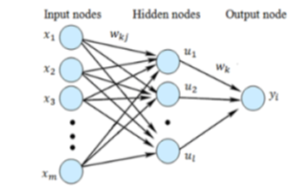


Indian Journal of Science and Technology
Year: 2020, Volume: 13, Issue: 33, Pages: 3364-3376
Original Article
Kush Kumar Dey1*, Vijay Kumar Dwivedi2, Satanand Mishra3
1Research scholar, Department of Civil Engineering, National Institute of Technology, Durgapur, 713209, India. Tel.: +91 894 287 2286
2Professor, Department of Civil Engineering, National Institute of Technology, Durgapur, 713209, India
3Sr. Scientist, CSIR, Advanced Materials and Processes Research Institute (AMPRI), Bhopal, 462064, India
*Corresponding Author
Tel: +91 894 287 2286
Email: [email protected]
Received Date:02 June 2020, Accepted Date:30 August 2020, Published Date:10 September 2020
Objectives: The main objective of this research is to determine the Hydrological (Rainfall-Runoff) model by using Artificial Neural Networks (ANNs) for the study area. Methods: The ANNs model was applied to the relative impact of different climatic variables such as Rainfall, Temperature, Cloud Cover, Potential Evapotranspiration, and Relative Humidity for the district of Bankura located on Lower Gangetic Plain (Zone no-III) in India. This study has also developed runoff hydrograph using various Slope, Rainfall Intensity, and Roughness over the catchment. The researcher has collected the Real-Time data series of 116 years(1901-2016) for the six meteorological stations of district Bankura from India Meteorological Department, Pune. For estimating runoff values, the study has been used Kothyari and Garde equation in which the most important factor i.e. the Vegetal Cover Factor (Fv) was considered. For developing the ANNs model, the available data were separated as 70% for training, 15% for testing, and 15% for validation. Findings: The Predicted values using ANNs model are more useful for better estimation of water resources management than previous researches. The model performance was with better efficiency (Nash-Sutcliffe Efficiency) and it was greater than 97%. Novelty: First time, this research established the Hydrological (Rainfall-Runoff) model by using Artificial Neural Networks(ANNs) for the study area.
Keywords: Artificial neural networks; climate change; meteorological data; water resources management; runoff; district Bankura
© 2020 Dey et al. This is an open-access article distributed under the terms of the Creative Commons Attribution License, which permits unrestricted use, distribution, and reproduction in any medium, provided the original author and source are credited. Published By Indian Society for Education and Environment (iSee).
Subscribe now for latest articles and news.